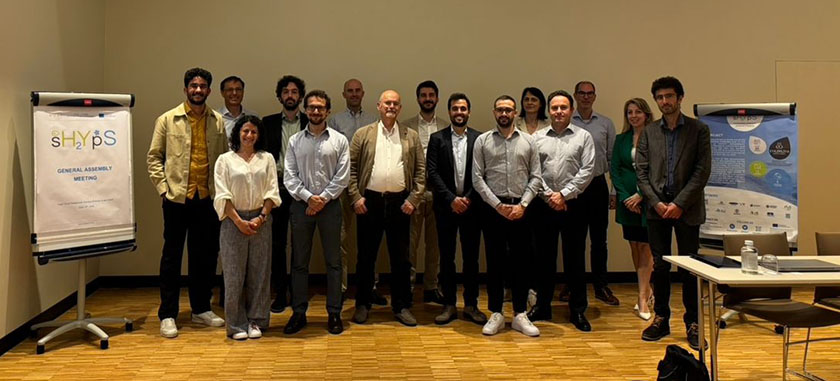sHYpS Project Working to Decarbonize Shipping
The shipping industry is facing one of the most demanding challenges ever: to find the way to achieve zero emission navigation. The time to achieve such goal is very short: the next big deadline imposed by the International Maritime Organization (IMO) is to reduce the total annual GHG emissions from international shipping by at least 50% by 2050. On top of this IMO requirement, the FuelEU Maritime initiative adopted in 2023 set a gradual reduction target for GHG emissions of energy used on board by a ship arriving at, staying within, or departing from ports from 2% in 2025 to 80% in 2050. Hydrogen is one of few zero-emission solutions that is very promising, but the technology necessary to use it on board is not completely ready.
To address the tight application timelines and the technological gap, sHYpS is centered around the idea of a swappable storage system for the liquid hydrogen, based on new c-type ISO containers. This solution can enable a full zero emission ship platform in the needed time. sHYpS aims at supporting the decarbonisation of the shipping industry by developing a novel LH2 swappable storage solution, which can be adapted to multiple types of vessels and speed up the green transition. The sHYps project triggers the hydrogen supply-chain development, generating demand, while tackling safety and handling requirements.

To this end, sHYpS will demonstrate the 1 Viking’s newbuilds Ocean Cruise vessel with the storage system onboard and energy management system by 2026 with a limited power fuel cell. The 6MW PEM fuel cell will cut 50% of emissions in a 14 day fjord cruise.
This project was announced in 2022, with 13 leading representatives from different industries and 6 European countries with a budget of €14,295,314, funded by Horizon Europe with Grant Agreement n° 101056940, coming together to develop the project goals and a framework to meet them.
• Development of a novel liquid hydrogen fuel storage, designed for road transport and to marine codes, based on an intermodal 45’ C-type container that can be easily loaded and unloaded by onboard facility.
• Design a suitable fuel cell based powertrain /modular containerized powertrain based on optimized PEM fuel cells.
• Design an integrated logistic network for the delivery of liquid green hydrogen to vessels based on swapping pre-filled containers.
• Use of the results through demonstration of the 2 hybrid cruise ships starting already by 2025.
• Validation of the business cases.
Plug’s main work path in the project is to define an integrated logistic network for the delivery of liquid green hydrogen to vessels, taking into considerations all regulatory, technical, logistic and economic constraints.
The first phase, completed in June 2023, focused on designing the supply-chain, analyzing regulatory needs, operational constraints, and transportation options for liquid hydrogen. Safety considerations for transportation of hazardous materials were also assessed. Economic scenarios including swapping and refill options were evaluated, along with safety requirements such as maximum clearance and weight limits.
The second phase, slated for completion in June 2025, delves deeper into provisioning hydrogen and its associated logistics. It aims to map and match liquid green hydrogen generation plants with ports for vessel refilling, optimizing supply sources across Europe. The analysis includes exploring delivery routes, alternative port options for Viking vessels, and loading/offloading methods for liquid hydrogen containers onto vessels. Additionally, risk assessment and guidelines for LH2 container operation in refilling are defined.
Learn more about the sHYpS project here.
The post sHYpS Project Working to Decarbonize Shipping first appeared on Plug Power.
The post sHYpS Project Working to Decarbonize Shipping appeared first on Plug Power.